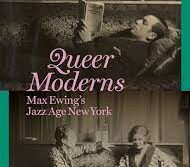 The Diamond Setter
The Diamond Setter
by Moshe Sakal
Translated by Jessica Cohen
Other Press. 304 pages, $15.95
THIS INVENTIVE, engaging novel from Israel, inspired by true events, traces the history of two families through their connection to a piece of a famous blue diamond known as Sabakh. Along the way, it explores the history of Israel and the state of the country today, mainly through the cities of Tel Aviv and Jaffa.
Sakal writes in an afterword that the book is “an amalgamation of historical facts, family stories, and the fruits of my imagination.” The story begins in Menashe’s jewelry shop in Tel Aviv. A longtime customer is returning a piece of Sabakh to Menashe that had been robbed from the store years earlier. The perspective then switches to Tom, Menashe’s nephew, who’s working as an apprentice to the jeweler. A writer as well, Tom narrates most of the story while writing a novel called The Diamond Setter, involving much of the same plot as the novel he appears in. This “meta-narrative” is done in a playful way, and allows Tom and others to make amusing comments about writers and the creative process.
Another narrative thread enters when Fareed, a young man from Damascus, crosses the border illegally into Jaffa. There to see the city of his family’s stories, he joins Tel Aviv’s gay scene and protest movement. He also carries with him a piece of Sabakh, given to him by his grandmother, which he returns to Menashe. In a clever twist, he gets romantically involved with Tom and his boyfriend Honi, a soldier in the Israeli military working in the communications department.
The novel offers a fascinating glimpse into Israel’s attitude toward homosexuality. While Fareed visits a vibrant gay bar, one character remarks that “most gay Palestinians are closeted,” while another warns Fareed of “pinkwashing,” the idea that “Israeli society accepts us, supposedly,” while treating Palestinians as second-class citizens. Someone else remarks that “nothing scares the Israeli army more than an unarmed Arab.” Tom and Honi conduct their relationship in secret, with Honi bringing Tom, and later Fareed, to his office late at night, explaining to the guards that the men are helping with his news reports. Honi’s sister Ayelet is the only one who know about his gayness, though later in the book his father Amiram accidentally discovers it. Amiram is “overcome by an inexplicable sense of closeness to his son,” while remembering “all the drama classes and flute classes they’d sent Honi to,” wondering if he should have “insisted on something more masculine, like soccer.”
At the heart of the book are the life stories of the many characters in Menashe and Fareed’s families, told one chapter at a time. There is Menashe’s Aunt Gracia, a chanteuse so beloved by the Ottoman sultan that he gave her Sabakh. Her sister Mona, blind but beautiful, would become Menashe’s grandmother. Gracia’s lover Sami, born in Jaffa in 1900, remembers the unusual Clock Tower Square, with two clocks set to two different time zones. Menashe eventually tells the story of how his piece of the diamond was stolen, which comes off in a funny style. While the family connections can be difficult to follow at times, their stories are enthralling, full of powerful dramas.
This is Sakal’s first novel to be translated into English. His language flows easily in Jessica Cohen’s translation. A quietly affecting novel, it offers an unusual perspective on a thorny part of the world.
Charles Green is a writer based in Annapolis, Maryland.




